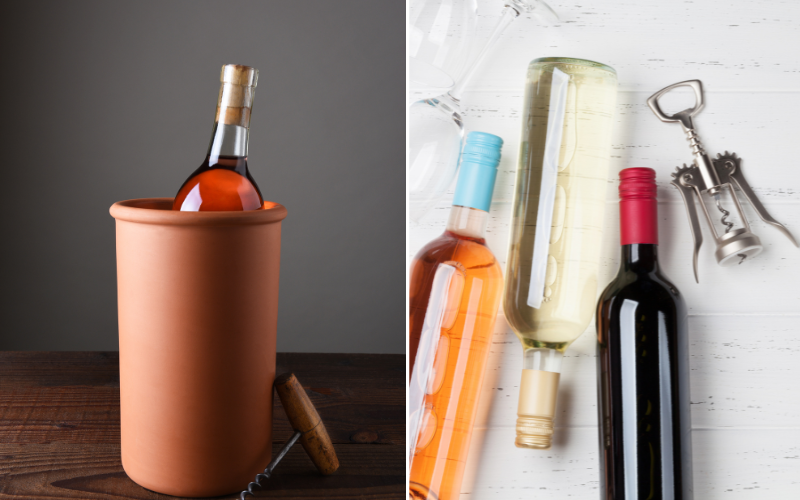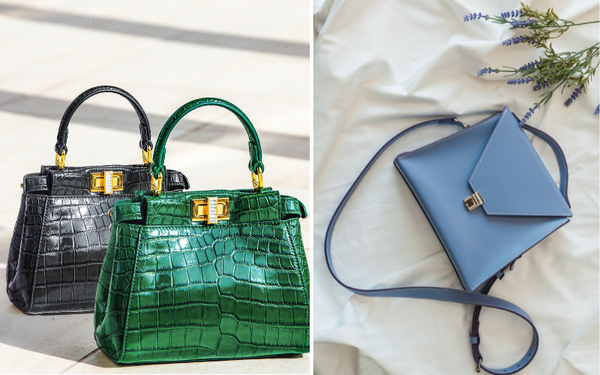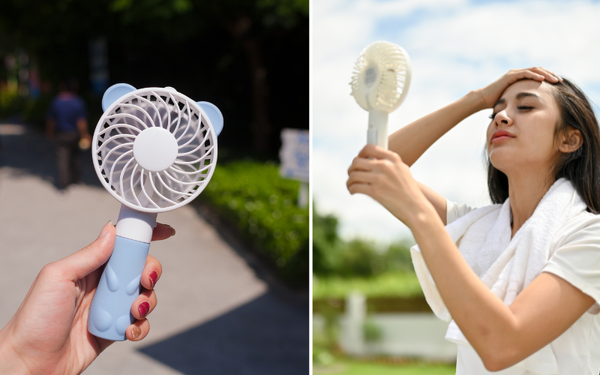Whether you’re a seasoned connoisseur or a casual wine enthusiast, you know the importance of serving your favorite vintages at the right temperature. But what happens when you’re not near your wine cellar or don’t have access to a refrigerator? Discover the versatile world of insulated wine coolers - your portable solution to maintaining the perfect pour! But, do insulated wine coolers work effectively? The answer is yes, as they are specifically designed to keep your wine at the ideal temperature for an enjoyable experience.
Key Takeaways
- Insulated wine coolers use a double-walled construction to create a thermal barrier and keep wines at the desired temperature.
- The right cooler can maintain an optimal temperature for stored wine, preserve flavor and aroma, and provide versatility for different types of vintages.
- When selecting your ideal cooler consider factors such as capacity, size, style & design to ensure it meets your needs & fits in with home décor.
Understanding Insulated Wine Coolers
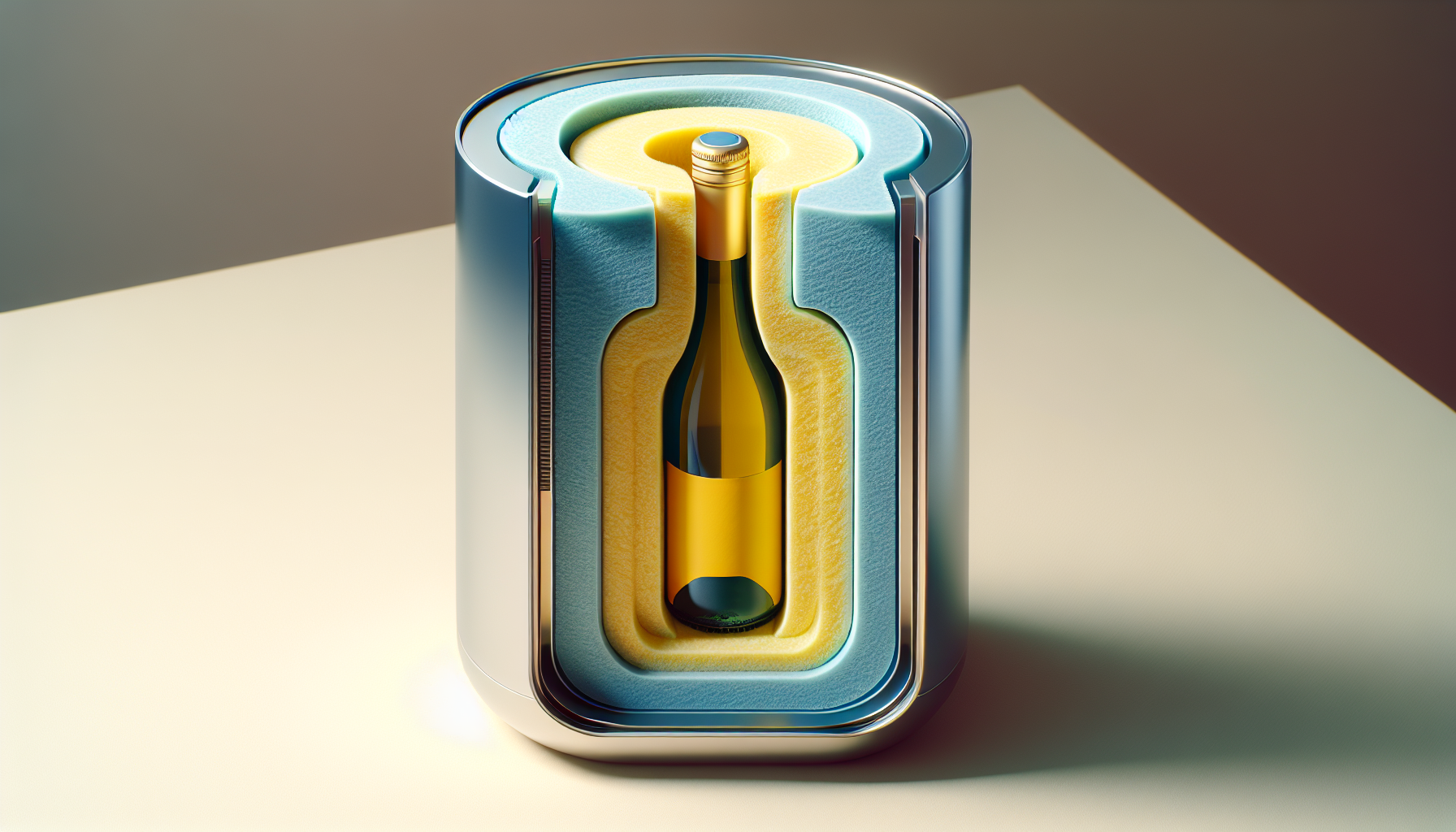
Insulated wine coolers, also known as wine bottle chillers, have transformed the way we enjoy our vintages. These handy devices are engineered to maintain your wine at the perfect temperature, guaranteeing each sip is enjoyed at its peak. But how does a wine cooler work its magic to maintain a wine’s temperature?
The secret lies in the cooler’s double-walled construction. This design creates a thermal barrier that prevents warm air from reaching the wine, thereby maintaining the desired temperature. The double walls of the cooler offer insulation, a key factor in keeping your wine chilled for at least an hour or longer. Whether you’re savoring a bottle of Cabernet Sauvignon or a crisp Chardonnay, a high-quality wine cooler ensures your wine stays at the ideal temperature from the first pour to the last drop.
The performance of a wine cooler is not solely dependent on its structure, but also the materials incorporated in its design. Wine coolers are commonly made from marble and stainless steel, both of which are excellent at keeping a chilled bottle of wine at the desired temperature. The insulation, whether it’s made of glass, plastic, or other materials, prevents warm air from reaching the wine, thereby extending the time your wine stays chilled. So whether you’re savoring a glass of white wine on a hot summer day or enjoying a bottle of red at a picnic, a wine cooler ensures your beverage stays cold and refreshing.
The Role of Double Walled Construction
The double-walled design of a wine cooler plays a fundamental part in sustaining the perfect temperature for your wine. The two walls provide thermal insulation, preventing warm air from reaching your bottle and ensuring the chill is preserved. Whether it’s made from stainless steel, glass, or plastic, the double-walled design forms a barrier that reduces heat transfer, helping to keep your wine at a consistent temperature for an extended period.
Insulation Materials: What Keeps Your Wine Cold?
The selection of insulation materials in a wine cooler is a key determinant in its capacity to keep your wine chilled. Some wine coolers use triple-walled construction and piocelan, both of which are effective at preventing heat transfer. Triple-walled coolers use multiple layers of insulation to slow down heat transfer, thereby preserving the ideal temperature inside the cooler.
Piocelan, on the other hand, is a highly insulative material that inhibits heat transfer, aiding in the preservation of cold temperatures for wine. So, even if you’re in a hot climate, a well-insulated wine cooler can still keep your bottle chilled to perfection.
Passive vs. Active Cooling Systems
In terms of maintaining the ideal temperature, wine coolers utilize either passive or active cooling mechanisms. Passive cooling systems use natural convection and insulation to sustain the preferred temperature without any power source, while active cooling systems employ a compressor or thermoelectric device to chill the wine. Both systems have their benefits, from the silence and energy efficiency of passive cooling to the precise temperature control offered by active cooling systems.
Once you comprehend the functioning of these systems, you can select a wine cooler that aligns seamlessly with your requirements and lifestyle.
Real-World Performance: How Long Can a Wine Cooler Keep a Bottle Cold?
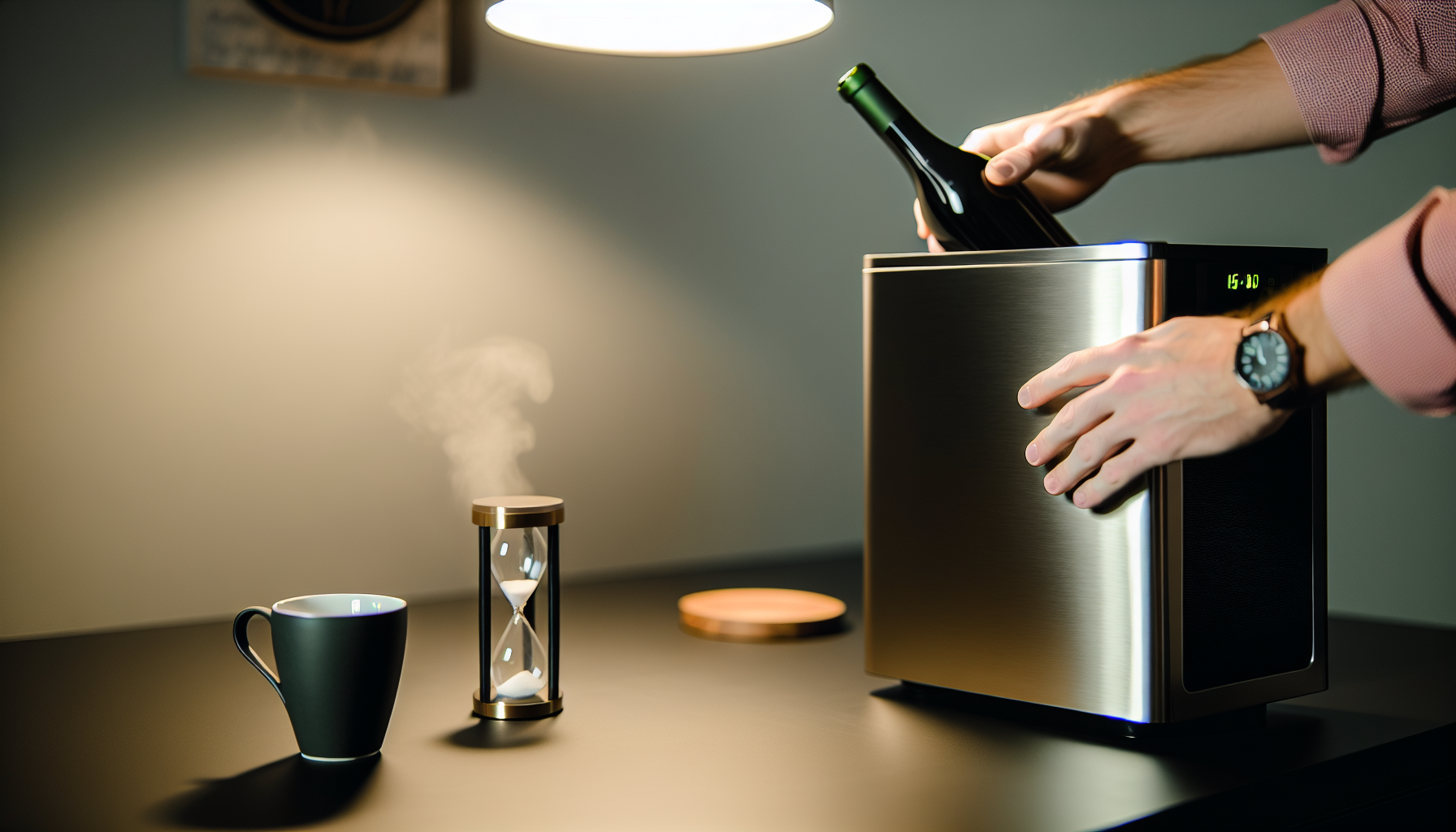
So, for how long can a wine cooler keep a bottle chilled? The answer depends on several factors, including the ambient temperature, the type of insulation used, and the type of cooling system in place. However, on average, a stainless steel cooler can keep a chilled bottle of wine within 10 degrees of its original temperature for about 2.5 hours. This means you can pop open your favorite bottle of wine, enjoy it at your leisure, and still have it stay refreshingly cold.
But what if you’re planning a picnic or a day at the beach? Not to worry! Wine coolers can still keep your favorite bottle chilled for hours. A wine cooler with a freezable gel sheath can maintain the cold temperature for up to 5 hours. This means you can savor your wine at the ideal temperature, from the first glass to the last, even if you’re away from home.
However, bear in mind that the performance of wine coolers can be affected by the ambient temperature. As the ambient temperature rises, the effectiveness of the cooler diminishes. But by considering factors like insulation and the type of cooling system, you can still enjoy a perfectly chilled bottle of wine, no matter where you are.
From Opening to Last Glass: Duration of Chill
As soon as a wine bottle is uncorked, the countdown begins on how long it can remain chilled. However, an insulated wine cooler can significantly extend this time. Regardless of the wine type - be it a fruity white or a full-bodied red - a well-insulated cooler can maintain a wine’s chill from the moment the bottle is opened until the last glass is poured.
So whether you’re sipping slowly or sharing with friends, you can count on your wine cooler to keep your favorite vintage at the perfect temperature, ensuring your beverage cold and enjoyable.
Impact of Ambient Temperature on Cooler Efficiency
Although wine coolers are engineered to sustain a steady temperature, their efficacy can be influenced by the external (or ambient) temperature. As the ambient temperature rises, the cooler’s efficiency diminishes. This is because the cooler has to work harder to maintain the desired temperature, which can affect its overall performance.
So, if you’re planning to use your wine cooler outdoors on a hot day, it’s important to take this into consideration. By choosing a cooler with superior insulation and an efficient cooling system, you can ensure your wine stays perfectly chilled, even in warmer weather.
Comparing Wine Storage Solutions
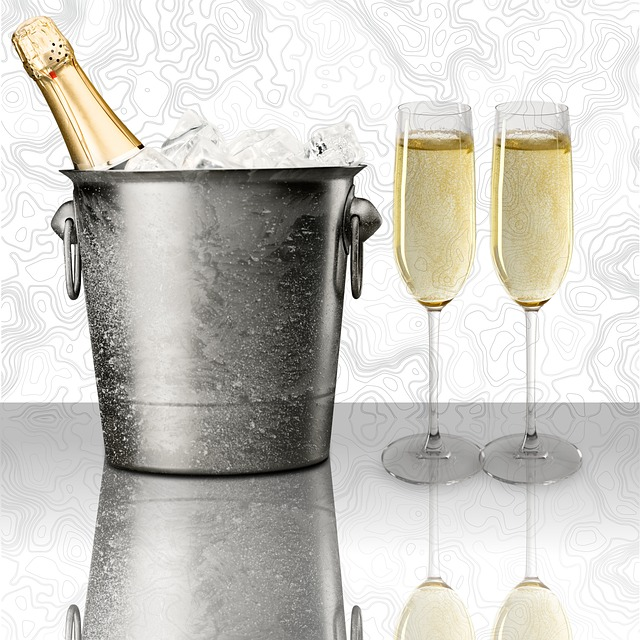
Having examined the intricate details of insulated wine coolers, how do they compare with other wine storage options? Let’s take a look at two common alternatives: ice buckets and refrigerators.
Although both can chill your wine, they each come with their unique advantages and disadvantages.
Ice buckets:
- Simple and cost-effective solution for short-term chilling
- Portable and easy to use
- Perfect for outdoor gatherings or parties
- Can over-chill your wine if left in too long, potentially affecting the wine’s flavor and aroma
- Not suitable for long-term storage
Conversely, refrigerators can keep your wine at a low temperature for an extended duration. But unlike wine coolers, refrigerators are not designed to maintain the optimal temperature range for wine. They also lack the humidity control that a wine cooler offers, which is essential for preserving the cork’s integrity and preventing premature oxidation of the wine. So while refrigerators may seem like a convenient option, they might not be the best choice for serious wine enthusiasts.
Ice Buckets vs. Insulated Coolers: A Cold Comparison
For quick wine chilling, both ice buckets and insulated coolers are capable. However, ice buckets can lead to over-chilling, which can mask the wine’s flavors and aromas. On the other hand, insulated coolers provide a more controlled and consistent chilling process, thanks to their superior insulation and temperature regulation capabilities.
So whether you’re hosting a dinner party or enjoying a quiet evening at home, an insulated wine cooler can ensure your wine is served at just the right temperature.
Refrigerator or Wine Cooler: Best for Prolonged Chilling?
If you seek to preserve your wine for an extended period, you might question whether a refrigerator or a wine cooler is the better choice. While a refrigerator can keep your wine cold, it’s not designed to provide the optimal temperature range for different types of wine. In addition, refrigerators often have temperature fluctuations that can affect the wine’s quality over time.
On the other hand, a wine cooler provides a stable and consistent temperature, making it a better choice for long-term wine storage. Plus, with a wine cooler, you’ll have a dedicated space for your wine collection, without taking up valuable refrigerator space.
Preserving the Perfect Pour: Tips for Using Your Wine Cooler

While choosing an appropriate wine cooler is significant, understanding how to utilize it proficiently is just as important. Here are a couple of tips to help you get the most out of your wine cooler.
First, consider pre-chilling your wine bottles before placing them in the cooler. This can help maintain the desired temperature for a longer duration.
Second, consider the placement of your wine cooler. Placing your cooler in a cool, shaded area away from direct sunlight or heat sources can improve its efficiency.
Remember, every time you open the cooler’s door, cold air escapes and warm air enters, which can affect the internal temperature. To minimize temperature fluctuations, try to limit the frequency of opening the cooler’s door and organize your bottles for easy access.
And don’t forget to take into account the initial temperature of the wine. If the wine is already at a lower temperature, it will require less time for the wine cooler to reach the desired chilled temperature.
By following these tips, you can ensure your wine cooler works effectively to keep your wine at the perfect serving temperature.
Maximizing Chill Time: Pre-Chill Your Bottles
Pre-chilling your wine bottles before placing them in the cooler can significantly enhance the cooler’s performance. By starting with a cooler bottle, you can maintain the desired serving temperature for a longer period. The ideal pre-chilling temperature varies depending on the type of wine. Lighter wines, like Pinot Gris or Sauvignon Blanc, should be colder, while heavier wines, like a full-bodied Cabernet Sauvignon, should be cooler than room temperature but not too cold.
A little preparation can go a long way in ensuring you get the most out of your wine cooler.
Placement Matters: Where to Put Your Wine Cooler
The placement of your wine cooler can greatly affect its performance. Here are some tips to consider:
- Place the cooler in a cool, shaded area to help maintain a consistent temperature.
- Position it away from direct sunlight or heat sources to prevent overheating and improve energy efficiency.
- Ensure your cooler has adequate ventilation to prevent heat build-up and maintain consistent cooling.
Remember, a well-placed wine cooler not only operates more efficiently but can also extend the life of the cooler, giving you more chilled wine moments to enjoy as you store wine.
The Science Behind Chilled Bliss: How Insulation Maintains Temperature
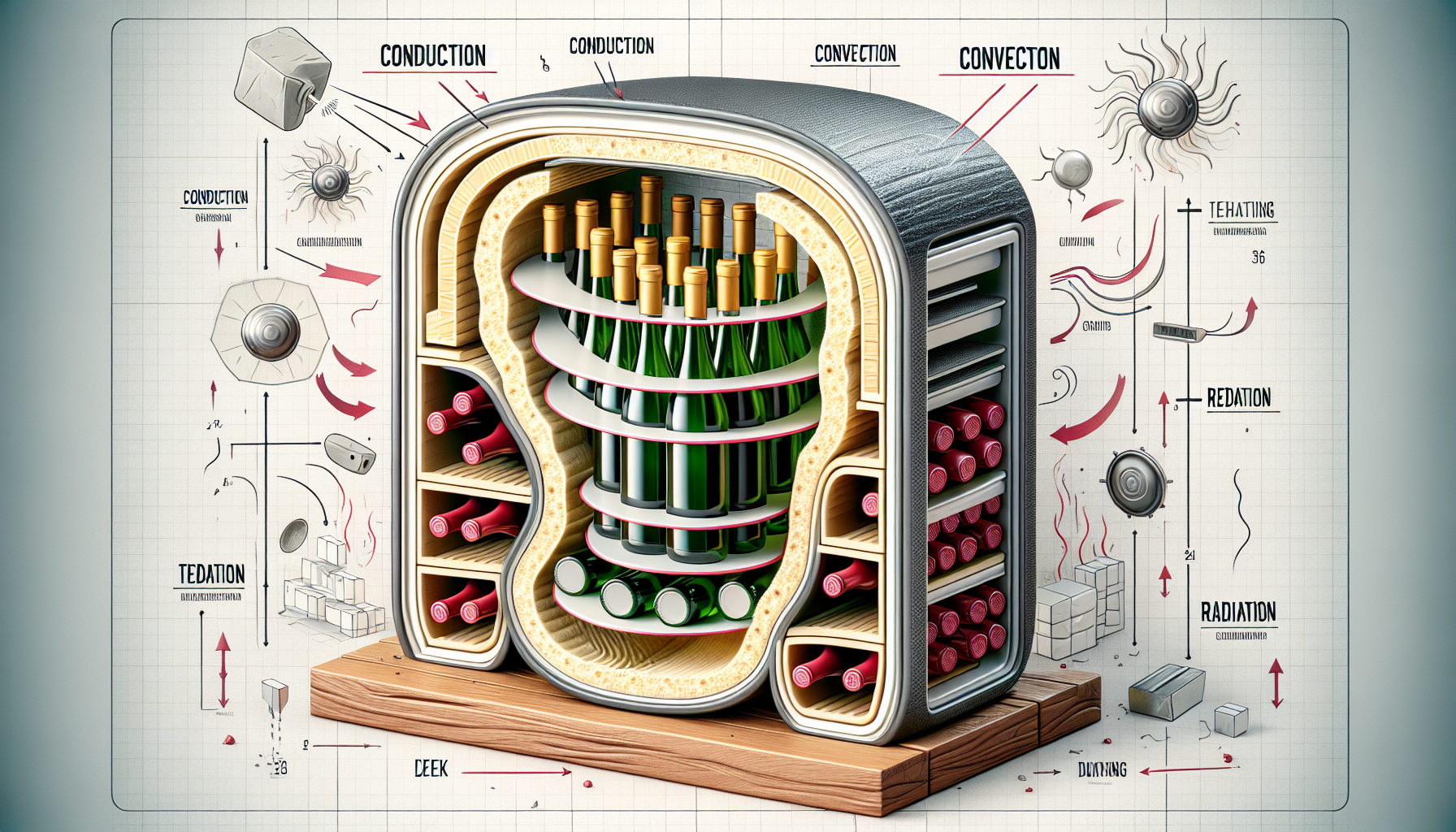
Ever been curious about the science that enables your wine cooler to maintain that ideal chill for your choice bottle of wine? Let’s take a closer look. The key to understanding how insulation maintains temperature in a wine cooler lies in the principles of heat transfer - conduction, convection, and radiation.
Conduction is the mechanism through which heat moves from the warmer environment to the cooler interior of the cooler. The insulated walls of the cooler prevent heat from entering or escaping, and any heat that does enter is quickly dispersed by conduction, thus maintaining the internal temperature.
But that’s not all. The air inside the cooler also plays a crucial role in maintaining temperature. The chilled bottles inside the cooler create a pool of cold air that helps keep the wine at the desired temperature. This chilled air, combined with the cooler’s insulation and heat transfer principles, work together to keep your wine perfectly chilled.
So next time you pour a glass of your favorite chilled wine, you’ll appreciate the science that went into every refreshing sip.
Conduction, Convection, and Radiation: Understanding Heat Transfer
Conduction, convection, and radiation are the three main methods of heat transfer. In conduction, heat is transferred through direct contact, like when heat from the warmer surroundings is transferred to the cooler interior of the cooler.
Convection, in contrast, involves the transfer of heat through the motion of heated fluid, like air or water. Radiation, however, is the transfer of energy in the form of electromagnetic waves from a heated surface to its environment.
Understanding these principles of heat transfer can help you appreciate how your wine cooler maintains the perfect temperature for your wines.
The Importance of Air Inside the Cooler
The air within the cooler plays a critical part in sustaining your wine’s temperature. The cold air inside the cooler provides insulation, which helps to avoid temperature fluctuations that can affect the quality of the wine. Moreover, the chilled bottles inside the cooler create a pool of cold air, which aids in preserving the wine’s chill.
By understanding the role of air inside the cooler, you can ensure your wine is served at the perfect temperature every time.
Beyond White Wines: Versatility of Insulated Wine Coolers
Insulated wine coolers aren’t solely for white wines. They provide a flexible solution for keeping a variety of wines, from hearty reds to fizzy champagnes, at the ideal temperature. With the ability to provide a controlled environment with consistent temperatures, insulated wine coolers are ideal for preserving and enhancing the flavors of all your favorite vintages.
Whether you’re a fan of a full-bodied Cabernet Sauvignon or prefer a light and fruity Pinot Noir, a wine cooler can keep your red wines at the perfect serving temperature. Keeping your red wines in a cooler can enhance their flavors and aromas, providing a superior wine-drinking experience.
And let’s not forget about the bubbly! Champagne and sparkling wines can also benefit from being stored in a wine cooler. Keeping these wines at the right temperature is crucial to preserving their effervescence and enhancing their unique flavors. With a wine cooler, you can ensure your celebratory bubbles are always served at the right temperature, making every occasion extra special.
Not Just for Whites: Red Wines in Your Cooler
While it’s a common misconception that only white wines need to be chilled, red wines can also benefit from a slight chill. In fact, all wines, red or white, have a temperature range at which they are best served to bring out their unique flavors and aromas.
For red wines, this is typically between 55°F and 65°F, depending on the specific variety and personal preference. By storing your red wines in a wine cooler, you can ensure they are always served at the perfect wine’s temperature, enhancing your wine drinking experience.
Celebratory Bubbles at the Right Temp: Champagne and Sparkling Wines
When it comes to champagne and sparkling wines, maintaining the right temperature is crucial. These wines are best served chilled, between 47-50°F, to preserve their effervescence and enhance their unique flavors. With an insulated wine cooler, you can ensure your celebratory bubbles are always served at the right temperature, whether you’re toasting a special occasion or simply enjoying a relaxing evening at home.
So why not add a touch of elegance to your celebrations with a perfectly chill wine, courtesy of one of the best wine coolers, your trusty wine cooler?
Selecting the Ideal Wine Cooler for Your Lifestyle
Selecting the perfect wine cooler for your needs isn’t solely about performance and temperature regulation. Other factors, such as:
- capacity
- size
- style
- design
can also play a key role in your decision. So whether you’re a wine connoisseur with a vast collection or a casual wine lover who enjoys a glass now and then, there’s a wine cooler out there that’s just right for you.
The size and holding capacity of the wine cooler are important aspects to consider. If you have a large wine collection, you might want to opt for a cooler with a larger capacity. But remember, it’s always a good idea to select a cooler that’s approximately double the size of your typical wine bottle collection. This gives you ample space for future additions to your collection.
The style and design are also significant factors to contemplate. While functionality is important, you’ll also want a wine cooler that complements your home décor and reflects your personal style. Whether you prefer a sleek, modern design or a more traditional look, you’ll find a wide range of wine coolers to choose from.
Capacity and Size: Finding the Right Fit
In terms of capacity and size, it’s vital to consider both your present requirements and future ones. If you’re a casual wine drinker, a compact wine cooler might be all you need. But if you’re a serious wine collector or plan to become one, you’ll need a cooler with a larger capacity. It’s also important to consider the size of the cooler in relation to your available space. After all, a wine cooler should enhance your living space, not clutter it.
By considering both capacity and size, you can find a wine cooler that fits not only your collection but also your lifestyle.
Style and Design: Aesthetic Meets Functionality
The style and design of your wine cooler can also considerably influence your overall wine experience. From sleek stainless steel models to models with glass doors for easy viewing, the options are endless. But regardless of the design you choose, remember that functionality is just as important. Look for features that enhance the cooler’s performance, such as adjustable thermostats, vibration reduction, and dual or triple-zone cooling.
With the right blend of style and functionality, your wine cooler can be a conversation piece that perfectly complements your love for wine.
Summary
In conclusion, an insulated wine cooler is a versatile and practical solution for maintaining the optimal temperature for your favorite wines. Whether you’re a seasoned wine collector or a casual wine enthusiast, a wine cooler can enhance your wine drinking experience by ensuring your wines are always served at their ideal temperature. From understanding the science behind heat transfer to choosing the right cooler for your lifestyle, we hope this guide has provided you with valuable insights into the world of wine coolers. So why wait? It’s time to elevate your wine experience with the perfect wine cooler!
Frequently Asked Questions
Are thermoelectric wine coolers reliable?
Thermoelectric wine coolers are reliable for short term storage in smaller, cooler spaces but may not perform optimally in warmer ambient temperatures.
Can I make a wine cooler colder?
Switching your wine cooler to a lower setting is the best way to make it colder. Alternatively, adding an ice tray at the top of the unit will also draw out extra heat from inside.
Do wine coolers actually work?
Wine coolers can be set to chill wines within a range of 45-65 degrees Fahrenheit, which ensures that the wine is stored at an appropriate temperature. A regular fridge's temperature may fluctuate due to frequent opening and closing, so a wine cooler is necessary to maintain the optimal temperature for your wine.
How long do thermoelectric wine coolers last?
The average lifespan of a wine cooler is 10 to 15 years, though factors such as usage habits can affect its longevity.
What types of wines can be stored in a wine cooler?
A wine cooler can store all types of wines - red, white, and sparkling - by adjusting the temperature accordingly. Full-bodied red wines should be kept between 60°F to 65°F, while white wines should be stored at a temperature of 50°F to 55°F.
You Might Also Like...
